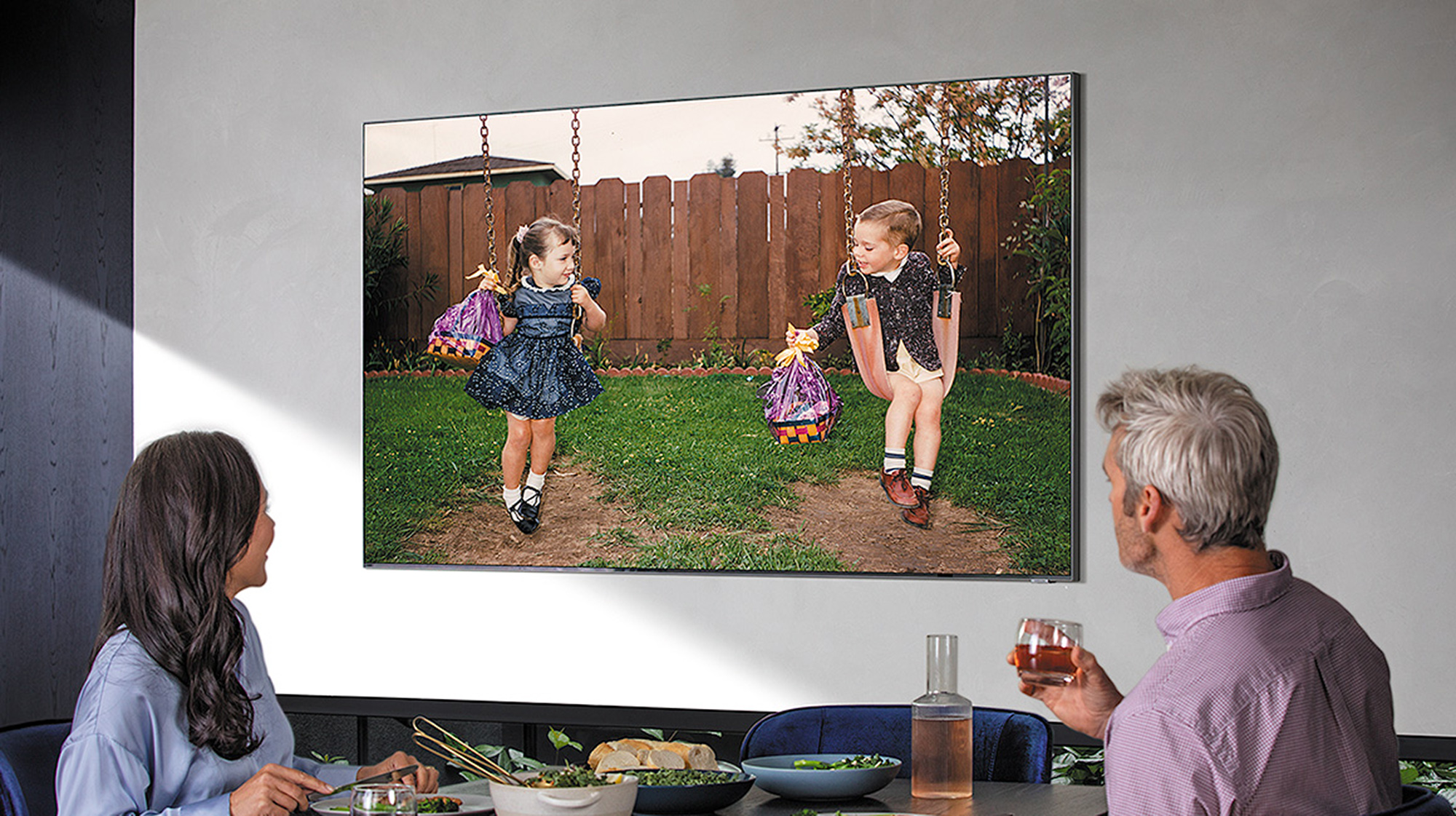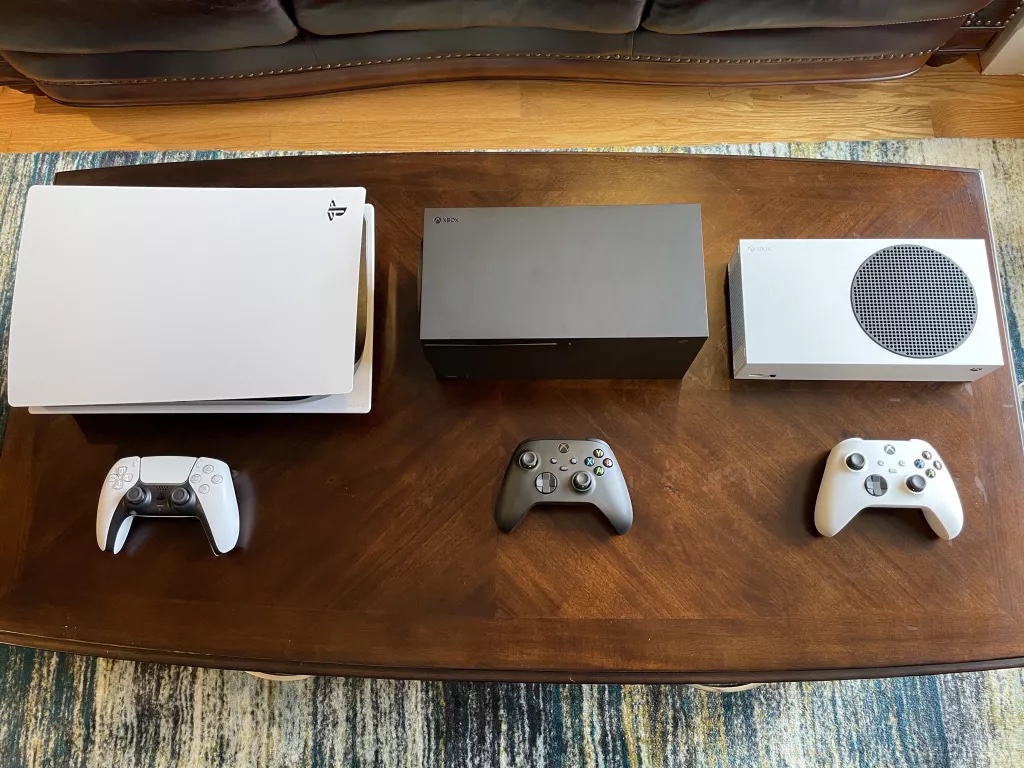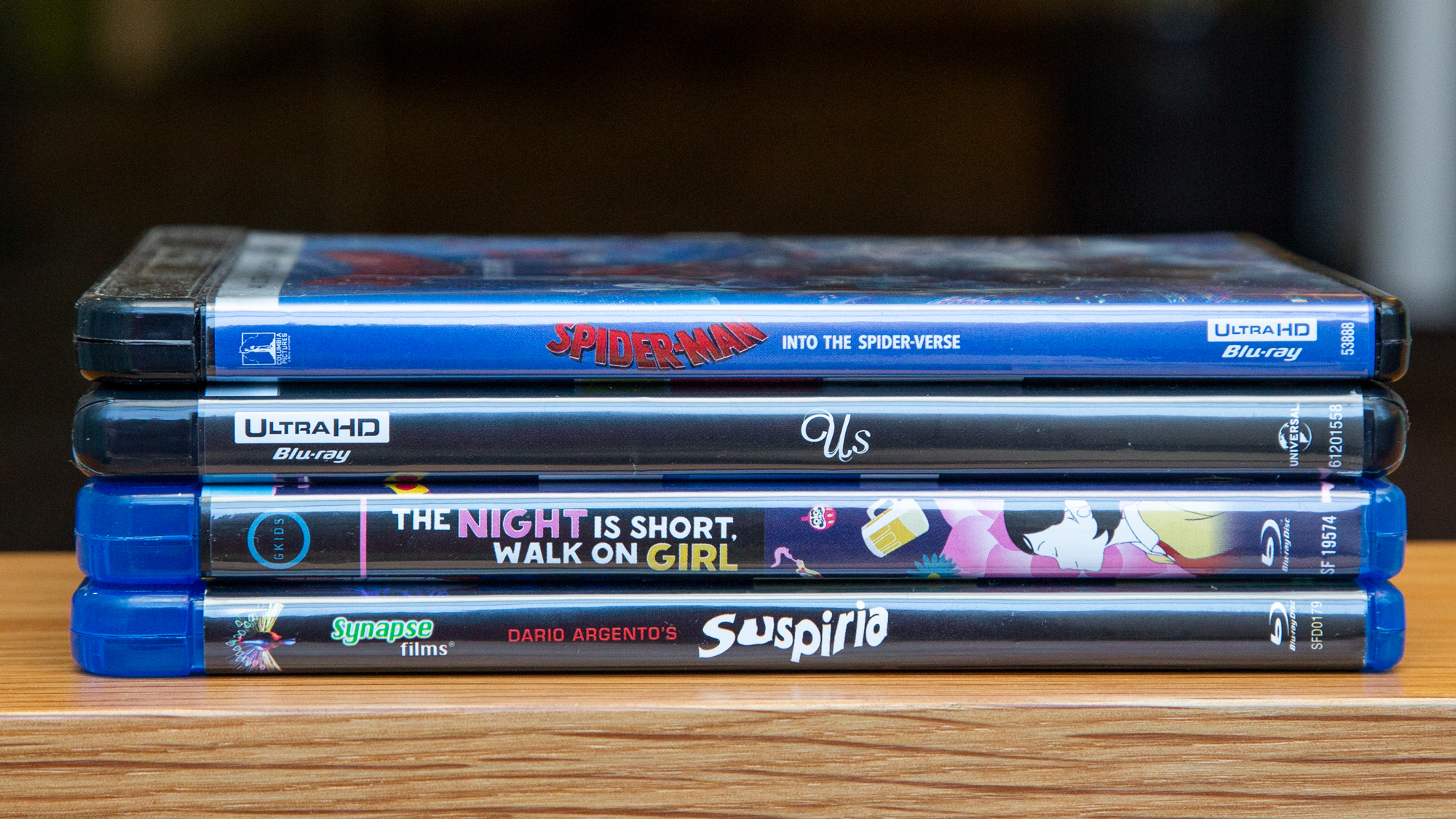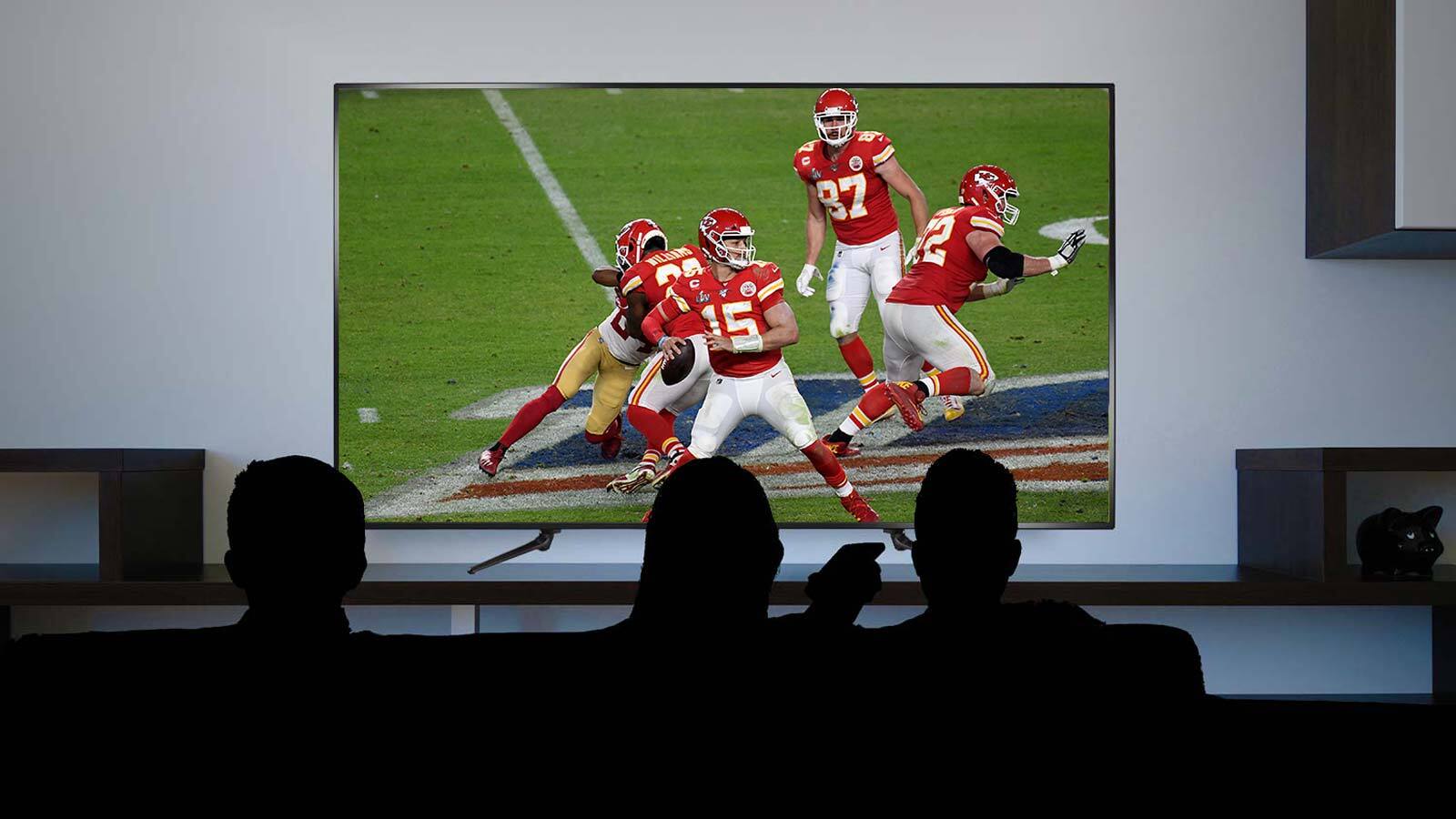8K TVs: What can you actually watch in 8K?
Is there anything to watch on an 8K TV? And where do you find it?

Look at any review of any 8K TV on the market and you'll run into one nagging question: Where's the 8K content? The first 8K TVs were introduced in 2018, and three years later the availability of 8K media is still relatively non-existent.
The 8K Association, the industry body that handles 8K certification and promotes the 8K format, puts it this way on their website: "We admit, it’s not yet as simple as flipping to any TV channel to find beautiful 8K resolution content."
Boy, what an understatement. Here’s what you need to know about 8K content and where to find it.
- Check out the best TVs we've reviewed
- Our TV buying guide has advice for every TV shopper
- What to buy? These are the best TV brands you can get
8K content: The chicken, the egg and the pandemic
New formats are always faced with something of a chicken and egg problem, with new hardware required to support the latest and greatest formats, and media in that new format to justify buying the hardware that supports it. And movie and TV production sometimes evolves slowly, as these new standards have to filter through to camera equipment, editing software, and new distribution methods are needed for the sudden jump in bandwidth.
Navigating this early stage can make or break new technologies, with many innovations never achieving the critical mass needed to create a thriving ecosystem of both hardware and content. Even when it does happen, it can sometimes be pretty slow.
Even as UHD Blu-ray sales and 4K streaming options have grown, 4K media remains a small segment of the media market.
The first HDTVs started selling in 1998, but it wasn't until 2008 that Blu-ray was adopted as the new standard for HD movies releases by the major Hollywood studios – a full decade after the first HDTV went on sale.
The interesting counterpoint to this is the newer 4K standard, which was introduced in 2012, but in less than a decade, 4K TVs have become the standard for the TV market, dropping in price drastically – just check out the best TVs under $500 for some excellent examples of affordable 4K TVs.
Get instant access to breaking news, the hottest reviews, great deals and helpful tips.
But 4K media is still relatively scarce. Ultra HD Blu-ray discs were introduced in 2016, but Netflix started streaming in 4K two years prior. But even as UHD Blu-ray sales and 4K streaming options have grown, 4K media remains a small segment of the media market. Most over-the-air broadcasts are in 720p, with cable and satellite still stuck at to 720p and 1080i, and even streaming is mostly done at 1080p, though there are many more options for 4K streaming today.
All of this is exacerbated by recent events. 2020 was expected to be a breakout year for 8K content. The Tokyo Summer Olympics were set to be broadcast in full 8K resolution, and 8K capable game consoles were on the horizon for the holidays.
But then, as with most things 2020, the year of 8K failed to go as planned. Now the PS5 and Xbox Series X are here, but 8K gaming isn't enabled, and the Tokyo Olympics have been rescheduled for this July, complete with NHK's 8K broadcast. And here we are, in the middle of 2021. 8K TVs are available to buy, some even at somewhat reasonable prices, but 8K content is still nowhere to be found.
That's all to say that a meaningful rollout of 8K media could be years away. We could still be writing articles in 2031 about whether it's worth buying an 8K TV, and helping people figure out how to find and watch 8K content.
8K content: What you can watch

But if you're interested in buying an 8K TV now – or perhaps have already ponied up an extra few thousand dollars for one – you want to know where you can watch 8K media now, today.
We'll take a look at each option in detail, but the short answer is that there are still relatively few places to get 8K video, and professionally-made 8K movies and shows are still largely missing.
For 8K TV owners, your biggest selection of media will still be upscaled media, blowing up 4K and 1080p content to display on your big 8K screen. But you can find some 8K video through select streaming outlets, enjoy gaming in 8K (provided you have the right hardware), and you can even try making your own 8K videos.
In the near future, there are a few other options on the horizon. Broadcast technology could soon (sort of) support 8k content, and 8K sports may be a reality within the next year.
Let's look at each option in detail.
8K content: Upscaling
Talk to any TV manufacturer about 8K TVs and there's one term you'll be hearing a lot of: Upscaling.
The good news is that 4K content when upscaled to 8K resolution looks pretty great.
Upscaling is the process used to make lower resolution content display properly (and hopefully look better) on a higher resolution screen. In simple terms, it does this by adding additional pixels to the picture, allowing lower resolution images to display on the larger screen. The most basic forms of upscaling use what is called pixel doubling, turning a single pixel into a larger 2x2 cluster of pixels. Doing this across the image turns a 1920 x 1080 image into a 3840 x 2160 pixel image, and doing it again will fill the 7680 x 4320 pixels of an 8K display.

But pixel doubling alone is a fairly crude method, and it makes for lousy looking images, especially on higher resolution displays. In the past, TV manufacturers have applied a number of technical tricks to the upscaling process, using anti-aliasing and smoothing to eliminate the jagged edges that simple pixel doubling creates, color distribution to create more natural looking objects, and more.
But on 8K TVs, which are just as likely to be upscaling 720p imagery from broadcast television as they are a 4K Blu-ray movie, the upscaling has to be significantly better. To this end manufacturers are using machine learning, with AI driven upscaling that can identify objects, pick out different types of scenery, and even make educated guesses about textures and patterns that may not have been captured in the original content at all.
Frankly, upscaled 4K or lower resolution content is far and away the most realistic content for your 8K TV, because there's just not much out there yet. And there's no denying that the latest upscaling technologies are significantly better than anything we've seen in the past.
The good news is that 4K content when upscaled to 8K resolution looks pretty great. But lower resolution content, whether it's 1080p shows streamed from Netflix or 720p shows broadcast from major networks, is harder to get right. No matter how smart the upscaling is, blowing something up several times the size and resolution of the original content will be noticeable.
8K content: Streaming

You can't talk about modern TVs without talking about streaming, but if you're looking for 8K movies on Netflix and Amazon Prime, you're out of luck. The biggest names in streaming have announced no plans for 8K in the near future, and some, like HBO Max launched without even having any 4K content. (They have since added some 4K titles, but not all TVs and devices support it.)
There's also the question of bandwidth. Netflix says you need at least 25 Mbps download speeds to stream 4K Ultra HD content, and Sony's new Bravia Core streaming service is promising true lossless streaming quality in 4K, and it's estimated to use up to 80 Mbps to stream in ultra HD. (Check out our guide What internet speed do I need? to learn more.)
Streaming 8K content, which has four times the resolution of 4K, and up to 120 frame rate (double the 60 frames per second that 4K generally uses), will demand much more.
HDMI 2.1, the first HDMI standard that can handle 8K, has a bandwidth of 48 Gbps. Even with as-yet-undeveloped compression technologies, minimum bitrate for streaming in 8K will be 100 Mbps or higher. Given that median download speeds were roughly 86 Mbps for homes in the U.S. last year (according to Speedtest.net), it's unlikely that we'll have widely available broadband to support 8K streaming anytime soon.
So where can you stream 8K video? The pickings are mighty slim. You can stream 8K video on YouTube and Vimeo. You'll have a small selection of landscapes and similar stock footage options to choose from.
NASA also has 8K footage available for download, from the first 8K video of Earth (shot in 2018) to … well, that's it. (It's also available on YouTube.)
8K content: Gaming

The latest gaming consoles dangle a vague promise of 8K gaming, but neither one really delivers. Both the PS5 and the Xbox Series X use custom AMD hardware that can output up to 8K resolution, with frame rates up to 60Hz at that resolution. But neither console has really delivered on that promise, since there are no games that take advantage of this resolution.
In order to actually game in 8K, you'll need a high-end gaming PC rocking either an Nvidia RTX 3090 or an AMD Radeon RX 6800. Even then, you'll be limited to a handful of games - almost nothing is made to be rendered at 8K resolution. As with movies and shows, upscaled 4K content is probably the best you'll get in most cases.
8K content: Record your own video

The shortest path to getting 8K video on your TV might be a camera phone in your hands.
The best place to get 8K content might actually be to make your own. Whether you want to pony up the tens of thousands of dollars for a Red Helium 8K camera – that's what the movie studios are using – or just make the most of the 8K video capabilities on your new Samsung Galaxy S21, the shortest path to getting 8K video on your TV might be a phone camera in your hands.
Actually, a smartphone may be your best bet. A few of the we've reviewed offer 8K video, like the OnePlus 9 Pro, the Asus ROG Phone 5 or the Asus Zenfone 8. But if landscape timelapses are your thing, pretty much any 35 megapixel camera can capture images at 8K resolution.
But, even if you're content gathering video in 3-5 minute snippets and skipping anything like editing – you'd encounter the same production issues that Hollywood is already running into – that's still an awful lot of work just to enjoy the full capability of your new 8K TV.
8K content: Blu-ray

Even in this age of streaming, videophiles tend to hold out for physical media, so it makes sense to imagine that 8K Blu-ray discs are in the works.
Ultra HD Blu-ray is the best way to get 4K movies for 4K TVs, but any 4K aficionado will tell you that even those pickings are pretty slim. Even the 4K releases of major movies, like Avengers Infinity War aren't true 4K, they're 2K source material scaled up to 4K – not much different than what your TV already does with full HD video.
A single triple layer Blu-ray 3.0 disc has a capacity of 100GB, which might be enough for an 8K movie, but not without some serious compression. Raw 8K footage weighs in at 121.5 GB per minute, with a full hour of footage resulting in a giant 7.29 TB file. Adding metadata like high-dynamic range and deeper color depth will only make for even larger digital files.
The good news is that once media or streaming formats are figured out, there should be some 8K movies ready to go. Several recent films have shot in 8K – Guardians of the Galaxy 2 was the first major Hollywood film shot at the higher resolution.
But most productions that use 8K cameras aren't even planning an 8K release. Instead, they shoot in 8K so that they can later reframe shots and tighten in on actor's faces in the editing booth without losing resolution for the 4K version of the movie.
8K content: Sports

The postponed Tokyo Olympics is planned to showcase 8K, with audiences getting content online through download or streaming.
Sports will likely be the first place that real progress is made for 8K content. The postponed Tokyo Olympics is still planned to showcase 8K, with live 8K footage shared in Japan by broadcaster NHK, and international audiences getting 8K online, through download or streaming.
Samsung and BT Sport have teamed up in Europe to offer Premier League and Champions League matches in 8K, and LG shot a single Premier League match in 8K in late 2019 – though that was largely a move to gather some demo material for LG's 8K sets.
But equipment for live events is even more cost prohibitive than movies. Cameras like the Sony UHC-8300 cost about a half a million dollars, and on-site production equipment is similarly expensive, and has to be updated to handle the increased demands for data and storage.
8K content: Broadcast

Finally, all this upcoming 8K content might be most easily delivered to antenna users. The next step in broadcast TV (ATSC 3.0 or NextGen TV) offers much better signal bandwidth than current transmission standards, and can already deliver 4K content over-the-air.
Recent trials with multiple antennas have proven that 8K signal can actually work over-the-air, using MIMO (multiple-input and multiple-output) technology similar to that used in modern Wi-Fi gear.
ATSC 3.0 broadcasts are being introduced in cities around the country, and the first TVs with ATSC 3.0 tuners appeared in 2020. But just like 8K TVs, it's still very early in the game for NextGen TV, and the rollout is happening slowly.
8K content: Long-term outlook
I've seen enough 8K TVs to confidently say that 8K is a major upgrade over 4K, and it's an upgrade you definitely want… eventually. The improvement in picture quality is genuinely stunning, and the level of realism it delivers will be game changing for more than just entertainment.
But every time I'm asked whether an 8K TV is worth buying now, the answer isn't just "no", it's "not for a long time". And the lack of 8K content is the biggest reason. TV shoppers can overlook a lot – price, size, complexity, unfinished standards – but only when jumping over those hurdles gets them something in return. And without any real 8K content available anywhere, there's no prize at the end of that steeplechase. Right now, 8K TVs are just a big, expensive, complicated way to watch 4K movies.
That could change within the next year or so. The Olympics might be a turning point, driving 8K adoption enough to spur development in streaming and home media. Gaming might suddenly take off, provided GPUs or current game consoles ever become widely available. It could happen sooner than any of us expect. But I'm not betting on it.
Brian Westover is currently Lead Analyst, PCs and Hardware at PCMag. Until recently, however, he was Senior Editor at Tom's Guide, where he led the site's TV coverage for several years, reviewing scores of sets and writing about everything from 8K to HDR to HDMI 2.1. He also put his computing knowledge to good use by reviewing many PCs and Mac devices, and also led our router and home networking coverage. Prior to joining Tom's Guide, he wrote for TopTenReviews and PCMag.

